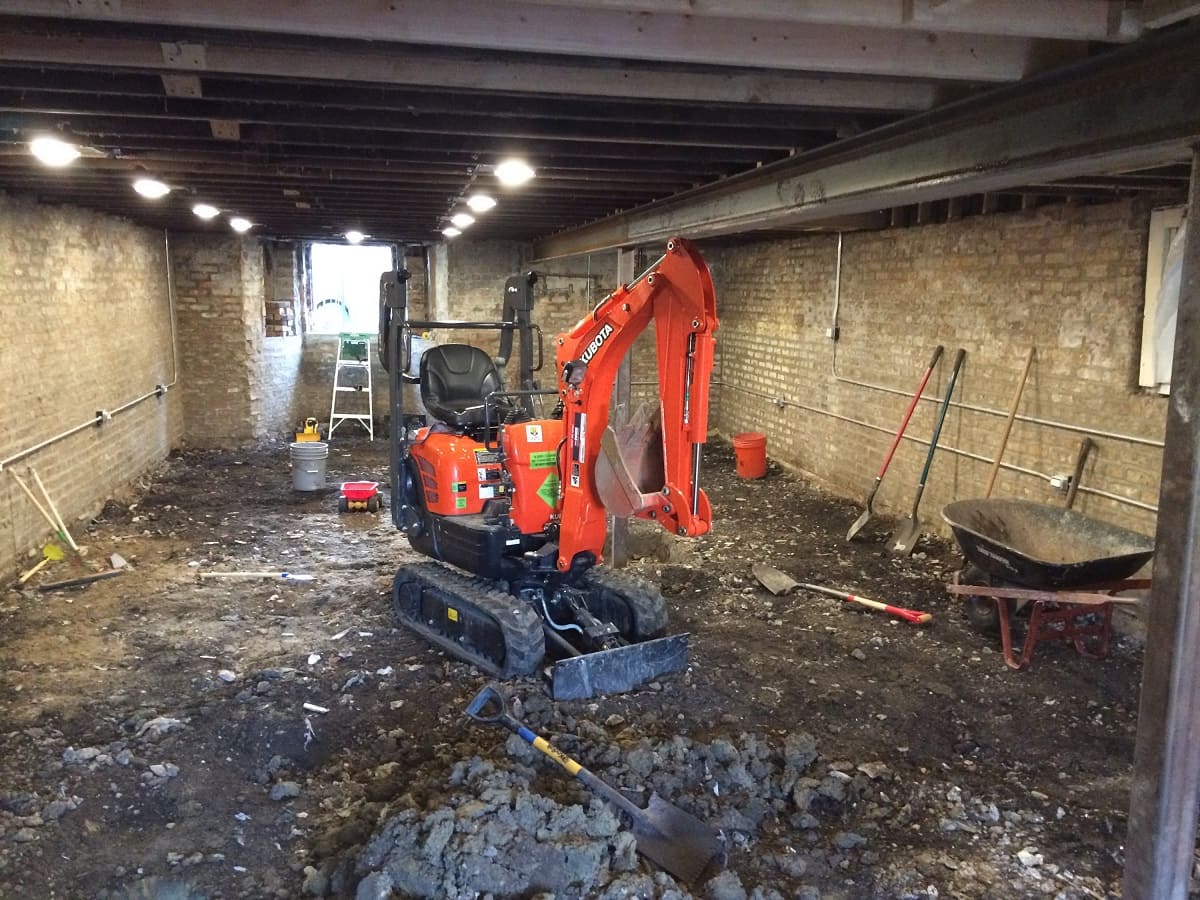

Articles
How To Dig Out A Basement
Modified: February 24, 2024
Learn the step-by-step process of digging out a basement in this informative and comprehensive guide. Our articles will provide you with all the tips and tricks you need to successfully complete this project.
(Many of the links in this article redirect to a specific reviewed product. Your purchase of these products through affiliate links helps to generate commission for Storables.com, at no extra cost. Learn more)
Introduction
Welcome to the comprehensive guide on how to dig out a basement. If you’re a homeowner looking to add more living space to your house, digging out a basement can be a great option. By excavating the area beneath your existing home, you can create a whole new level of usable space. Whether you want to create a cozy family room, a home theater, or even an extra bedroom, the possibilities are endless.
However, it’s important to note that digging out a basement is not a DIY project for the inexperienced. It requires careful planning, professional assistance, and adherence to local building codes. In this article, we will take you through the step-by-step process of digging out a basement, so you can better understand what it entails and make an informed decision.
Before you start any excavation work, there are a few important factors to consider. Let’s dive into the details…
Key Takeaways:
- Proper planning, professional assistance, and adherence to safety protocols and building codes are essential for a successful basement excavation project. Evaluating factors like structural integrity and soil conditions is crucial.
- From obtaining permits to finishing touches, creating a functional and inviting basement space requires attention to detail, consultation with professionals, and compliance with local regulations. Prioritizing safety and quality workmanship is key.
Read more: How Much To Dig A Basement
Factors to Consider Before Digging Out a Basement
Before you begin the process of digging out a basement, there are several key factors that you need to carefully consider. These factors will help determine the feasibility of your project and ensure that you are adequately prepared for the undertaking. Let’s take a closer look at these considerations:
- Structural Integrity: The first and most crucial factor to consider is the structural integrity of your existing foundation. The foundation of your home supports the weight of the entire structure, so it’s important to ensure that it can handle the additional load of a basement. Consult with a professional engineer or contractor to assess the condition of your foundation and determine if it is strong enough for excavation.
- Soil Conditions: The type and condition of the soil on your property can significantly impact the feasibility and cost of digging out a basement. Different types of soil have varying load-bearing capacities and drainage characteristics. Conduct a soil test to determine its composition, stability, and drainage potential. This will help you understand how the soil will behave during excavation and if any special precautions need to be taken.
- Water Table and Drainage: The water table is the level at which the ground becomes saturated with water. If your property has a high water table, it could pose challenges during basement excavation, as water can seep into the newly created space. It’s essential to assess the water table levels on your property and have a comprehensive drainage plan in place to prevent water infiltration and flooding.
- Neighboring Structures and Utilities: Consider the proximity of neighboring structures, such as fences, trees, or other buildings, that may hinder excavation. Additionally, identify the location of utility lines, such as gas, water, and electrical, to avoid damage during excavation. Consult with utility companies to mark the locations of buried lines before starting any digging work.
- Building Codes and Permits: Check with your local building department to understand the building codes and zoning regulations that govern basement excavation in your area. Obtain all necessary permits and approvals before starting work to ensure compliance with the law. Non-compliance can result in fines, project delays, or even the requirement to undo any excavation work.
- Cost and Budget: Digging out a basement can be a significant financial investment. Consider the costs associated with excavation, foundation reinforcement, utility installation, waterproofing, insulation, and finishing. Create a realistic budget and factor in additional costs that may arise during the project.
By carefully evaluating and addressing these factors upfront, you can make informed decisions and ensure a smooth and successful basement excavation project. In the next section, we will discuss how to determine the feasibility of digging a basement on your property.
Determine the Feasibility of Digging a Basement
Before embarking on a basement excavation project, it’s crucial to assess the feasibility of digging a basement on your property. This involves evaluating various factors such as soil conditions, foundation strength, and local regulations. Here are the steps to determine the feasibility:
- Soil Testing: Conduct a soil test to determine the composition, stability, and drainage capabilities of the soil on your property. This will help you understand if the soil is suitable for excavation and if any special precautions, such as shoring or soil stabilization, are required.
- Foundation Assessment: Hire a professional engineer or contractor to assess the structural integrity of your existing foundation. They will evaluate the foundation’s capacity to support the additional load of a basement and determine if any modifications or reinforcements are needed.
- Consult with Professionals: Seek advice from professionals experienced in basement excavations. They can provide valuable insights based on their expertise and knowledge of local conditions. Engage a geotechnical engineer or a structural engineer to evaluate the soil and foundation conditions specifically for your property.
- Review Building Codes: Familiarize yourself with the building codes and regulations specific to your area. Check if there are any restrictions on basement excavations, setbacks from property lines, or height limitations. This information will help you determine if digging a basement is permitted and if any additional requirements need to be met.
- Consider Neighboring Structures: Assess the impact of basement excavation on neighboring structures. Determine if the excavation process could potentially cause damage or instability to neighboring buildings, fences, or other structures. This evaluation will help identify any potential risks or precautions that need to be taken.
- Evaluate Cost and Time: Understand the financial and time commitments involved in digging a basement. Consider the costs associated with excavation, foundation reinforcement, utility installation, and finishing. Additionally, take into account the duration of the excavation project and how it may disrupt your daily activities.
- Alternative Options: If the feasibility assessment indicates significant challenges or prohibitive costs, explore alternative options for expanding your living space. This could include building an above-ground addition, converting existing space, or utilizing available space in a different way.
By thoroughly evaluating these factors, you can determine the feasibility of digging a basement on your property. If all indicators point to a positive outcome, you can proceed to the next steps of obtaining permits and hiring professionals for the project. However, if any of the assessments raise concerns, it may be wise to consider alternative solutions for creating additional living space in your home.
Obtain Necessary Permits and Approvals
Before you can begin the process of digging out a basement, it is essential to obtain the necessary permits and approvals from the relevant local authorities. These permits ensure that your project meets all the legal requirements and building codes. Here are the steps to follow in obtaining the required permits and approvals:
- Contact the Building Department: Reach out to your local building department to inquire about the permitting process for basement excavation. Provide them with details about your project, including the scope, timeline, and intended use of the basement.
- Submit Permit Applications: Complete the required permit applications provided by the building department. The applications will typically require detailed information about your property, the planned excavation, and any additional construction or modifications that will take place.
- Provide Supporting Documents: Along with the permit applications, you may need to submit supporting documents such as architectural plans, structural drawings, engineering reports, and any other necessary documentation. These documents will help the building department assess the safety and compliance of your project.
- Paying Permit Fees: There may be fees associated with obtaining the permits, which vary depending on your location and the scope of your project. Be prepared to pay these fees when submitting your permit applications.
- Wait for Permit Approval: After submitting your permit applications and supporting documents, you will need to wait for the building department to review and approve them. The approval process may take some time, so it’s important to plan accordingly and be patient.
- Inspectors and Inspections: Once your permits are approved, the building department will assign inspectors to your project. These inspectors will visit the site at various stages of the excavation and construction process to ensure that the work is carried out according to the approved plans and building codes.
- Addressing Feedback and Corrections: If the inspectors identify any issues or non-compliance during their inspections, you will need to address them and make the necessary corrections. This may involve making changes to the construction plans, revising the excavation process, or adjusting any other aspect that does not meet the building department’s requirements.
- Final Approval: Once the construction is complete and all inspections have been successfully passed, the building department will provide a final approval or Certificate of Occupancy. This certification confirms that your basement excavation project has been completed in compliance with all applicable regulations and can now be occupied.
Remember that the specific permit requirements and procedures may vary depending on your location. It is important to consult with the local building department to ensure you have accurate information and follow the appropriate steps for obtaining permits and approvals for your basement excavation project.
Hire a Professional Engineer or Contractor
When it comes to digging out a basement, hiring a professional engineer or contractor is crucial to ensure that the project is carried out safely and efficiently. These professionals have the knowledge and expertise to handle the complexities of basement excavation and will help you navigate through the various stages of the process. Here are the reasons why hiring a professional is essential:
- Expertise and Experience: A professional engineer or contractor specializing in basement excavation brings years of experience and expertise to the project. They understand the intricacies of soil mechanics, structural engineering, and building codes, allowing them to plan and execute the excavation in a manner that meets safety standards and ensures the structural integrity of your home.
- Design and Planning: A professional will work with you to develop a detailed plan for the basement dig. They will analyze your property, evaluate soil conditions, assess the existing foundation, and consider your specific needs and desires for the space. This planning stage is crucial to ensure that the excavation aligns with your goals and is feasible within the constraints of your property.
- Permitting and Regulatory Compliance: Professionals are well-versed in the permitting process and the local regulations governing basement excavation. They will assist you in obtaining the necessary permits, ensuring that all legal requirements and building codes are met throughout the project. This helps to avoid delays, fines, or potential complications later on.
- Coordination and Project Management: Digging out a basement involves coordination with various stakeholders, such as architects, engineers, utility companies, and subcontractors. A professional contractor will manage these relationships and oversee the entire project, ensuring that timelines are met, work is carried out efficiently, and all aspects of the excavation align with the approved plans.
- Safety and Risk Mitigation: Basement excavation can present safety hazards, especially when dealing with heavy machinery, deep excavations, and potential structural risks. Professionals prioritize safety and have the knowledge and experience to implement necessary safety measures, such as shoring, soil stabilization, and trenching protocols. They also carry liability insurance, which protects you and your property in the event of any accidents or damages.
- Quality Assurance: Hiring a professional ensures that the quality of workmanship is of a high standard. Professionals use specialized equipment and techniques to carry out the excavation accurately and efficiently. Their attention to detail and adherence to industry best practices will result in a well-conducted basement excavation, minimizing the risk of issues arising in the future.
When hiring a professional engineer or contractor, it is important to do your due diligence. Research their credentials, check for licenses and certifications, and request references from past clients. Review their portfolio of completed projects to ensure that they have experience with basement excavations specifically.
By enlisting the help of a professional, you can have peace of mind knowing that your basement excavation project is in capable hands. Their expertise, experience, and attention to detail will help you achieve your vision while ensuring the safety and integrity of your home.
Read more: How To Dig Out Crawl Space
Create a Detailed Plan for the Basement Dig
Creating a detailed plan for the basement dig is a crucial step in the excavation process. It helps ensure that the project is executed efficiently, meets your goals, and adheres to safety and regulatory requirements. Here’s how to develop a comprehensive plan for your basement excavation:
- Define Your Objectives: Start by clearly defining the purpose of the basement. Determine how you intend to use the space and what features you want to include, such as rooms, bathrooms, storage areas, or mechanical rooms. This will help guide the design and layout of the basement.
- Evaluate Existing Conditions: Assess the current state of your house and foundation. Consider the location of load-bearing walls, utilities, and potential obstacles that may impact the excavation process. Evaluate the condition of the foundation and identify any necessary repairs or reinforcements.
- Engage Architects and Engineers: Enlist the services of professionals, such as architects and structural engineers, to assist with the design and planning. They will take into account the existing structure, soil conditions, and your objectives to create a blueprint for the basement layout and necessary modifications.
- Design the Layout: Work with your team of professionals to design the layout of the basement. Determine the size and dimensions of each room, the location of walls and doorways, and the placement of utilities such as electrical outlets, plumbing fixtures, and HVAC systems. Consider natural light sources, ventilation, and potential egress points.
- Consider Structural Modifications: Based on the recommendations of your structural engineer, determine if any structural modifications are required to support the basement. This may include adding additional footings, beams, or columns to ensure the stability and integrity of the existing foundation.
- Develop a Construction Schedule: Create a construction schedule that outlines the timeline for each phase of the project. This includes the excavation, foundation reinforcement, utility installations, and finishing work. Allow for flexibility in the schedule, taking into account potential weather delays or unforeseen challenges.
- Obtain Cost Estimates: Work with your team to develop a detailed cost estimate for the entire project. This includes excavation costs, foundation reinforcement, utility connections, waterproofing, insulation, and finishing materials. Consider any contingencies for unexpected expenses that may arise during the project.
- Consider Health and Safety: Prioritize safety measures during the excavation process. Ensure that proper shoring and bracing are in place to prevent cave-ins or collapses. Implement protocols to protect workers from hazards such as dust, fumes, and noise. Adhere to local regulations and industry standards for excavation safety.
- Review and Revise: After the initial plan has been developed, review it with your team of professionals. Address any concerns, make necessary revisions, and ensure that all aspects of the plan align with your objectives, local regulations, and budget.
A detailed plan will serve as a roadmap for the basement dig, ensuring that all parties involved are aligned and have a clear understanding of the project. It provides a blueprint that guides the excavation, foundation reinforcement, and subsequent stages of construction. With a well-thought-out plan in place, you can proceed confidently knowing that the project is organized and will move forward smoothly.
Ensure Proper Safeguards and Safety Measures
When undertaking a basement dig, ensuring proper safeguards and safety measures is of utmost importance. Excavation work can be hazardous, so it’s crucial to prioritize the safety of workers, the surrounding environment, and the structural integrity of your home. Here are key steps to take to ensure a safe and secure excavation process:
- Hire Qualified Professionals: Engage experienced contractors who are well-versed in excavation safety protocols. Choose professionals who have the required licenses, certifications, and training to handle the specific challenges of basement excavation.
- Prepare a Safety Plan: Develop a comprehensive safety plan that outlines procedures and protocols for excavation work. This plan should include guidelines for personal protective equipment (PPE), safe working distances from excavation edges, and proper use of machinery and equipment.
- Identify Utilities and Markings: Before digging, contact local utility companies to mark the location of underground utility lines. This will help prevent accidental strikes during the excavation process, reducing the risk of injury as well as damage to essential services.
- Implement Shoring and Trenching: Depending on the depth and soil conditions, shoring and trenching may be necessary to prevent cave-ins and collapses. Consult with structural engineers or excavation professionals to determine the appropriate shoring techniques and equipment required for your specific project.
- Provide Adequate Lighting and Ventilation: Ensure that the work area is well-lit and properly ventilated to minimize the risk of accidents and promote a healthy working environment. Proper lighting will improve visibility, while adequate ventilation will help disperse dust and fumes generated during the excavation process.
- Promote Proper Trench Access and Egress: Install sturdy ladders or ramps to provide safe access and egress in and out of the excavation area. Ensure that these access points are properly secured to prevent accidental falls or injuries while entering or exiting the trench.
- Implement Hazardous Material Management: If there is a possibility of encountering hazardous materials during the excavation, such as asbestos or lead, consult with professionals who specialize in hazardous material management. Follow appropriate protocols for identification, removal, and disposal of these substances in compliance with local regulations.
- Regular Inspections and Safety Meetings: Conduct regular inspections of the work area to assess safety hazards and take corrective actions where necessary. Hold safety meetings with the construction crew to address any concerns, provide training on safe work practices, and establish an open dialogue for reporting any potential dangers or incidents.
- Maintain Clear Communication: Establish clear communication channels among all parties involved in the project. Ensure that everyone understands their roles and responsibilities regarding safety. Encourage open communication and the reporting of any unsafe conditions or actions.
- Adhere to Occupational Safety Standards: Familiarize yourself with and adhere to applicable local and national occupational safety standards, including those set by regulatory bodies such as OSHA (Occupational Safety and Health Administration). These standards outline safety guidelines specific to excavation work and should be followed rigorously.
By establishing and enforcing proper safeguards and safety measures, you can minimize the risks associated with basement excavation. Prioritizing safety not only protects the well-being of workers but also ensures the long-term integrity of the project. Remember, safety should always be the top priority throughout the entire excavation process.
Clear the Area and Prepare for Excavation
Before diving into the actual excavation process, it is crucial to clear the area and prepare the site to ensure a smooth and efficient operation. This phase involves several important steps that help set the groundwork for a successful basement dig. Here’s what you need to do:
- Obtain Necessary Permits and Approvals: Before starting any work, ensure that you have obtained all the required permits and approvals from the local authorities. Display the permits prominently at the job site to demonstrate compliance with regulations.
- Mark Work Area Boundaries: Clearly define the boundaries of the work area by installing proper barriers, such as fences or caution tape. This helps keep unauthorized individuals out of the construction zone and promotes safety for both workers and passersby.
- Remove Vegetation and Obstacles: Clear the area of any vegetation, trees, bushes, or other obstacles that may hinder the excavation process. It is essential to create a clear and unobstructed space for heavy machinery and workers to maneuver.
- Identify and Relocate Utilities: Locate and mark underground utility lines, such as gas, water, electrical, and sewer lines. Take precautions to prevent accidental damage to these utilities during excavation. If necessary, consult with utility companies to temporarily relocate or disconnect the services.
- Secure the Site: Install proper safety measures, such as fencing, barricades, or signage, around the perimeter of the work area. This helps control access and prevents unauthorized entry into the construction site, reducing the risk of accidents or injuries.
- Plan for Equipment and Materials: Determine the equipment and materials needed for excavation, foundation reinforcement, and other related tasks. Ensure that they are readily available and easily accessible at the job site. Have a plan in place for removing spoil or excess soil from the excavation area.
- Establish Site Facilities: Set up site facilities, such as temporary office trailers, sanitation facilities, and storage containers. These facilities provide essential support for the crew and help maintain a clean and organized job site.
- Address Environmental Considerations: Identify and address any environmental concerns specific to your project. This may include erosion control measures, sedimentation prevention, and protection of nearby water bodies or sensitive plant and animal habitats. Adhere to all applicable environmental regulations.
- Implement Safety Measures: Prioritize safety by ensuring that all workers are provided with personal protective equipment (PPE) such as hard hats, safety glasses, gloves, and high-visibility vests. Conduct regular safety meetings and reinforce safety protocols throughout the project.
- Establish Communication Channels: Set up effective communication channels among team members, including construction supervisors, subcontractors, and site workers. This ensures that everyone is on the same page, allowing for clear and efficient coordination throughout the excavation process.
By thoroughly clearing the area and preparing the site for excavation, you lay the foundation for a successful basement dig. Taking the time to address these initial steps sets the stage for a safe and organized construction site, resulting in a smoother and more efficient project overall.
Before digging out a basement, it’s crucial to check local building codes and obtain necessary permits. Additionally, it’s important to assess the soil conditions and consult with a structural engineer to ensure the safety and stability of the excavation.
Excavate the Basement Space
Excavating the basement space is a critical phase of the project where the actual construction work begins. This process involves carefully removing soil and creating the desired depth and shape for the basement. Here is an overview of the steps involved in excavating the basement space:
- Set Up Equipment: Arrange for the necessary excavation equipment to be delivered to the job site. This may include backhoes, excavators, bobcats, or other machinery suitable for the size and scope of the project.
- Establish Safe Work Practices: Before starting the excavation, conduct a thorough safety meeting with the entire construction crew. Emphasize the importance of adhering to safety protocols and discuss any potential hazards specific to the excavation process.
- Start Excavation: Begin removing soil from the designated excavation area, following the plans and specifications outlined in the basement’s layout. Take extra care when excavating near existing structures or utilities to prevent damage.
- Control Soil Spoils: Develop a plan for managing the soil spoils. This may involve stockpiling the soil on-site for later use, arranging for off-site disposal, or incorporating it into the backfilling process once the construction is complete.
- Monitoring and Inspection: Regularly monitor the excavation process to ensure that the desired depth and shape of the basement are achieved. Conduct inspections for stability and look out for any unexpected soil conditions or obstructions that may require adjustments to the excavation plan.
- Follow Shoring and Shoring Procedures: If required, install shoring systems and follow proper shoring procedures to maintain stability and prevent cave-ins or collapses. Shoring provides temporary support to the excavation walls and helps ensure the safety of workers inside the trench.
- Excavation Safety Measures: Implement safety measures, such as ensuring proper access and egress points to the excavation area, providing adequate lighting in the trench, and safeguarding against potential hazards like falling debris or equipment accidents.
- Manage Groundwater and Drainage: Depending on the water table and site conditions, implement measures to manage groundwater and drain water away from the excavation area. This may involve installing dewatering systems, pumps, and drainage channels to minimize water accumulation in the basement space.
- Excavation Waste Disposal: Properly dispose of any excavation waste or debris generated during the process. Arrange for the removal and disposal of soil spoils, adhering to local disposal regulations and environmental requirements.
- Coordinate with Other Contractors: If there are other contractors or subcontractors involved in the project, coordinate with them to ensure their work aligns with the excavation process. This includes any necessary coordination for utility connections, foundation reinforcement, or other related tasks.
Excavating the basement space requires careful planning, adherence to safety protocols, and close coordination between all parties involved. By following these steps and maintaining a focus on safety, you can ensure a successful excavation that sets the stage for the next phases of construction.
Read more: How Deep Can You Dig A Basement
Reinforce the Foundation and Walls
After excavating the basement space, it’s essential to reinforce the foundation and walls to ensure structural stability and integrity. This step is crucial, as it supports the weight of the existing structure and safeguards against potential shifts or settlement caused by the excavation. Here are the key considerations when reinforcing the foundation and walls:
- Foundation Inspection: Begin by thoroughly inspecting the existing foundation for any signs of damage, cracks, or weaknesses. This assessment will help determine if any repairs or additional reinforcement are required.
- Consult a Structural Engineer: Engage the services of a qualified structural engineer who specializes in foundation reinforcement. They will assess the condition of the foundation and develop a plan for reinforcement specific to your project.
- Footing Modification: In some cases, modifying the footings may be necessary to provide additional support. This may involve underpinning, which strengthens the existing footings by extending them deeper into the ground or using techniques like grouting or micropiles.
- Wall Strengthening: Reinforce the basement walls by installing bracing or tying systems. This can provide lateral stability and prevent inward movement of the walls. The specific method will vary depending on the construction materials used and the recommendations of the structural engineer.
- Use of Steel Beams or Posts: In situations where structural support is needed, steel beams or posts may be installed. These elements can distribute the weight of the structure more evenly and provide additional strength to areas where the load is concentrated.
- Waterproofing and Drainage: Address waterproofing and drainage considerations to prevent moisture intrusion. Install a waterproofing system, such as a membrane or waterproofing coating, to protect the walls and foundation from water damage. Ensure proper exterior grading, gutters, and downspouts to divert water away from the foundation.
- Compliance with Building Codes: Ensure that all reinforcement work adheres to local building codes and regulations. Compliance ensures that the structural modifications are done in a safe and code-compliant manner, providing long-term stability and meeting safety standards.
- Coordinate with Other Contractors: If other contractors or subcontractors are involved in the project, such as electricians or plumbers, coordinate with them during the reinforcement process. The work may require coordination for utility connections, installations, or modifications within the reinforced areas.
- Quality Assurance and Inspections: Regularly inspect the reinforcement work to ensure compliance with the engineer’s recommendations and construction best practices. Conduct additional inspections as necessary to ensure that the reinforcement is properly executed and meets the required standards.
- Testing and Documentation: Consider conducting tests, such as load tests or structural integrity tests, to verify the effectiveness of the reinforcement work. Keep detailed documentation of all reinforcement activities, including any design calculations, drawings, and inspection reports.
Reinforcing the foundation and walls is essential to maintain the structural integrity of your home after basement excavation. By following the recommendations of a structural engineer and adhering to building codes, you can ensure that the reinforcement work is carried out properly, providing long-term stability and peace of mind.
Install Essential Utilities and Drainage Systems
When digging out a basement, it is crucial to install essential utilities and drainage systems to ensure the functionality and efficiency of the space. Proper utility installation allows for the seamless integration of water supply, electricity, plumbing, and HVAC systems, while effective drainage systems prevent water accumulation and maintain a dry and comfortable environment. Here are the key steps to installing these vital components:
- Engage Licensed Professionals: Hire licensed and experienced professionals, such as plumbers, electricians, and HVAC contractors, to handle the installation of utilities. They have the expertise to ensure that the work is done safely and in compliance with all applicable codes and regulations.
- Develop Utility Plans: Work with your contractors and designers to create detailed utility plans that outline the placement and connections of water supply lines, electrical wiring, plumbing fixtures, and HVAC components. These plans will serve as a guide during installation.
- Water Supply: Install water supply lines, including pipes, valves, and meters, to bring water into the basement. Coordinate with your local water utility company to ensure compliance with their specifications and requirements.
- Electrical Wiring: Properly wire the basement to accommodate electrical outlets, light fixtures, and any specialized equipment or appliances you intend to use. Ensure that the electrical work is done by a licensed electrician and meets all electrical codes and safety standards.
- Plumbing: Install plumbing pipes and fixtures to provide drainage and water supply to the basement. This includes connecting to the main sewer or septic system and installing fixtures such as toilets, sinks, and showers. Considerations for venting and backflow prevention should also be addressed.
- HVAC System: Install heating, ventilation, and air conditioning (HVAC) systems to regulate temperature and provide a comfortable climate in the basement. This may involve extending existing ductwork or installing a separate HVAC system specifically for the basement.
- Utility Safety: Prioritize safety by ensuring that all utility installations follow proper safety protocols, such as using grounded electrical outlets and installing water shut-off valves and emergency gas shut-off devices where applicable. Regularly inspect and maintain the utility systems to identify and address any potential issues or hazards.
- Drainage Systems: Implement proper drainage systems to prevent water accumulation in the basement. This may involve the installation of perimeter drains or a sump pump system to redirect water away from the foundation and ensure a dry and moisture-free environment.
- Backflow Prevention: Install appropriate backflow prevention devices to safeguard the water supply from contamination. This is especially important if you plan to have plumbing fixtures, such as toilets or sinks, in the basement.
- Coordinate with Contractors: Ensure effective coordination among the various contractors involved in utility installation. This includes coordinating with plumbers for drain connections, electricians for wiring needs, and HVAC contractors for ductwork and equipment placement.
By installing essential utilities and drainage systems properly, you ensure the functionality and comfort of your basement space. Engaging licensed professionals, following safety protocols, and adhering to building codes are all crucial for a successful installation. These systems will provide the necessary resources for your basement’s intended use and contribute to a functional and enjoyable living space.
Backfill the Basement and Compact the Soil
Once the essential utilities and drainage systems have been installed in the basement, the next step is to backfill the excavated area and properly compact the soil. Backfilling involves filling the space around the foundation walls and bringing the soil back up to the desired level. Compacting the soil ensures stability and prevents settling or shifting. Here’s how to effectively backfill and compact the soil:
- Clean the Basement: Before backfilling, ensure that the basement is free from debris, loose soil, or any other materials that could hinder the proper placement of backfill soil.
- Use Suitable Backfill Materials: Choose backfill materials that are appropriate for your specific project. Common materials include soil, gravel, crushed stone, or a combination thereof. Consult with an engineer or contractor to determine the most suitable materials based on site conditions and the stability required.
- Layer the Backfill: Backfill in layers, gradually building up the soil around the foundation walls. Each layer should be no more than 8 to 12 inches thick. Compact each layer before adding the next to ensure proper stability and prevent future settling.
- Compact the Soil: Use mechanical compaction equipment, such as a vibrating plate compactor or a soil compactor, to compact the backfill soil. Compact the soil in layers and make multiple passes to achieve the desired density. Follow manufacturer guidelines and industry standards for compaction equipment and techniques.
- Pay Attention to Proper Moisture Content: Moisture content plays a crucial role in achieving proper compaction. Ensure that the soil moisture is neither too dry nor too wet. Optimal moisture content allows for better compaction and minimizes future settlement issues.
- Consider Adding Drainage Material: In areas with high water table or poor drainage conditions, consider incorporating drainage materials, such as gravel or crushed stone, near the foundation walls during backfilling. This helps facilitate proper water drainage away from the foundation, minimizing the risk of water-related issues.
- Protect Utilities and Inspections: Take caution not to damage any newly installed utilities during the backfilling process. Inspect the utilities and drainage systems after backfilling to ensure they remain intact and functional.
- Monitor Settlement: Keep an eye on any settlement that may occur after the backfilling and compaction process. If significant settlement or unevenness is observed, consult with a professional to address the issue and take corrective measures if necessary.
- Observe Local Regulations: Adhere to local regulations and building codes related to backfilling and soil compaction. These regulations ensure the stability and integrity of the backfilling process and promote long-term structural safety.
- Consider Waterproofing: As part of the backfilling process, consider applying waterproofing measures on the exterior of the foundation walls. This can help prevent water infiltration and protect the basement from moisture-related issues.
Backfilling and compacting the soil are crucial steps that provide stability and support to the foundation walls, ensuring the longevity and structural integrity of your home. Properly applied backfilling techniques, combined with appropriate compaction, minimize the risk of settling and shifting, creating a solid foundation for the rest of your basement project.
Waterproofing and Insulation
After backfilling and compacting the soil in your basement, the next step is to focus on waterproofing and insulation. These measures are essential to protect your basement from water intrusion, moisture damage, and to improve energy efficiency. Let’s explore the key considerations for waterproofing and insulation:
- Exterior Waterproofing: Consider applying a waterproofing membrane or coating to the exterior of your foundation walls. This acts as a barrier against water infiltration and helps prevent water damage. It is important to address any cracks or fissures in the foundation prior to waterproofing.
- Interior Waterproofing: Install an interior drainage system, such as a sump pump or French drain, to capture and divert any water that may enter the basement. This will help keep the space dry and minimize the risk of water-related issues, such as mold or structural damage.
- Foundation Insulation: Insulate your foundation walls to improve energy efficiency and control temperature fluctuations in your basement. There are various insulation options available, including rigid foam insulation, spray foam insulation, or insulated wall panels. Consult with professionals to determine the most suitable option for your specific needs.
- Vapor Barrier: Install a vapor barrier on the interior side of the foundation walls to prevent moisture migration from outside into the basement. This helps maintain a dry and comfortable environment and reduces the risk of mold growth or condensation issues.
- Air Sealing: Properly seal any gaps, cracks, or openings in the foundation walls to prevent air leakage. This improves energy efficiency and helps maintain consistent temperature levels in the basement. Use caulk, foam sealants, or weatherstripping to seal these areas effectively.
- Insulate Rim Joists and Sill Plates: Don’t forget to insulate the rim joists and sill plates, as they are common areas for energy loss. Insulating these areas helps create a thermal barrier and improves the overall energy efficiency of your basement.
- Waterproof Flooring: Choose materials for your basement flooring that are resistant to water and moisture. Consider options such as ceramic tiles, vinyl planks, or epoxy coatings that can withstand potential water exposure and are easy to clean and maintain.
- Proper Ventilation: Ensure adequate ventilation in your basement to prevent moisture buildup and improve air circulation. Install exhaust fans or consider a whole-house ventilation system to maintain a healthy indoor environment.
- Professional Assistance: Consider consulting with professionals who specialize in waterproofing and insulation. They can provide expert advice, assess the specific needs of your basement, and recommend the most effective solutions for your project.
- Follow Building Codes: Adhere to local building codes and regulations pertaining to waterproofing and insulation. Compliance with these standards ensures that the work is done correctly and helps prevent future issues.
By implementing proper waterproofing and insulation measures, you can create a dry, comfortable, and energy-efficient basement. These steps are essential for protecting your investment, preserving the structural integrity of your home, and creating a more livable space for you and your family.
Read more: How To Get Basement Smell Out Of Basement
Finishing Touches and Additional Considerations
Once the essential steps of basement excavation, reinforcement, utility installation, and waterproofing are complete, it’s time to focus on the finishing touches that will transform your basement into a functional and inviting living space. Here are some important considerations for completing your basement project:
- Plan the Layout: Finalize the layout of your basement, taking into account the intended use of the space. Consider incorporating rooms such as a family room, home office, gym, or entertainment area. Ensure there is sufficient lighting, both natural and artificial, to create a comfortable ambiance.
- Choose Wall Finishes: Select wall finishes that suit your style and enhance the aesthetics of the space. Options may include drywall, paneling, paint, or wallpapers. Consider the durability, ease of maintenance, and moisture-resistant qualities when making your choices.
- Select Flooring: Choose a flooring material that suits your needs and complements the overall design of the basement. Depending on your preference and budget, options range from carpeting and hardwood to laminate or luxury vinyl tiles. Ensure that the chosen flooring material is moisture-resistant and suitable for below-grade installations.
- Consider Ceiling Options: Decide on the type of ceiling treatment based on your desired aesthetic and functionality. Options include drywall, suspended ceilings, exposed beams, or acoustic panels. Consider the access needs for utility maintenance and any additional insulation requirements.
- Electrical and Lighting: Install appropriate lighting fixtures, outlets, and switches to meet your needs. Consider the placement of task lighting, ambient lighting, and accent lighting to create the desired atmosphere. If necessary, consult with an electrician to ensure compliance with electrical codes and safety standards.
- Plumbing Fixtures: Install plumbing fixtures, such as sinks, toilets, showers, and potentially a bar or kitchenette area if desired. Ensure proper connections and consider energy-efficient options for water fixtures.
- Heating and Cooling: If your existing HVAC system does not adequately cover the basement area, consider options such as extending the existing system or installing a separate system specifically for the basement. Energy-efficient systems, such as mini-split heat pumps, can provide both heating and cooling capabilities.
- Storage and Cabinetry: Incorporate functional storage solutions, such as built-in cabinetry, shelves, or closets, to maximize the usability of your basement. Customized storage options can help you maintain an organized and clutter-free space.
- Décor and Furnishing: Furnish and decorate your basement to reflect your style and create an inviting space. Choose furniture, artwork, and accessories that provide both comfort and functionality. Consider acoustical treatments to minimize sound transmission between floors.
- Insulation and Energy Efficiency: Ensure that proper insulation is in place, not just in the foundation walls but also in the rest of the basement. Consider additional insulation in finished walls and the ceiling to improve energy efficiency and create a comfortable living environment.
- Entertainment and Technology: Plan for any entertainment or technology needs you may have, such as a home theater system, surround sound, or a gaming area. Properly plan for wiring, cable management, and incorporating audiovisual components seamlessly into the design.
- Safety Considerations: Install smoke detectors, carbon monoxide detectors, and fire extinguishers in accordance with safety standards. Consider emergency egress routes and ensure that your basement meets all necessary safety codes and requirements.
- Maintain Proper Ventilation: Adequate ventilation is crucial to ensure proper airflow and prevent the buildup of moisture, odors, and indoor pollutants. Consider installing vents or exhaust fans to maintain a fresh and healthy environment.
By addressing these finishing touches and additional considerations, you can create a fully functional and aesthetically pleasing basement that complements your home and meets your specific needs. Remember to consult with professionals, adhere to local building codes, and prioritize safety and comfort throughout the entire process.
Conclusion
Congratulations on reaching the conclusion of this comprehensive guide on how to dig out a basement. Undertaking a basement excavation project can be a rewarding endeavor that adds valuable living space to your home. However, it is essential to approach the process with careful planning, professional assistance, and adherence to safety protocols and building codes.
We have covered crucial elements of the basement digging process from the initial considerations to the finishing touches. By evaluating factors such as structural integrity, soil conditions, and local regulations, you can determine the feasibility of digging a basement on your property. Obtaining the necessary permits and approvals, along with working with qualified professionals, ensures that the project meets legal requirements and is carried out safely and efficiently.
Creating a detailed plan for the basement dig allows for a smooth execution, considering layout, reinforcement, utility installation, and waterproofing and insulation. Backfilling and compacting the soil, as well as addressing finishing touches, such as flooring, walls, and utilities, contribute to a functional and inviting living space. Don’t forget about important considerations like ventilation, lighting, and safety measures.
Throughout the entire process, it is vital to consult with professionals, follow local regulations and building codes, and prioritize safety and quality workmanship. By doing so, you can achieve a successful basement excavation project that enhances your home’s value, provides valuable living space, and meets your unique needs and preferences.
Thank you for joining us on this journey. We hope that this guide has provided you with valuable insights and guidance for your basement excavation project. Wishing you the best of luck as you transform your home and create a beautiful and functional basement space to enjoy for years to come.
Frequently Asked Questions about How To Dig Out A Basement
Was this page helpful?
At Storables.com, we guarantee accurate and reliable information. Our content, validated by Expert Board Contributors, is crafted following stringent Editorial Policies. We're committed to providing you with well-researched, expert-backed insights for all your informational needs.

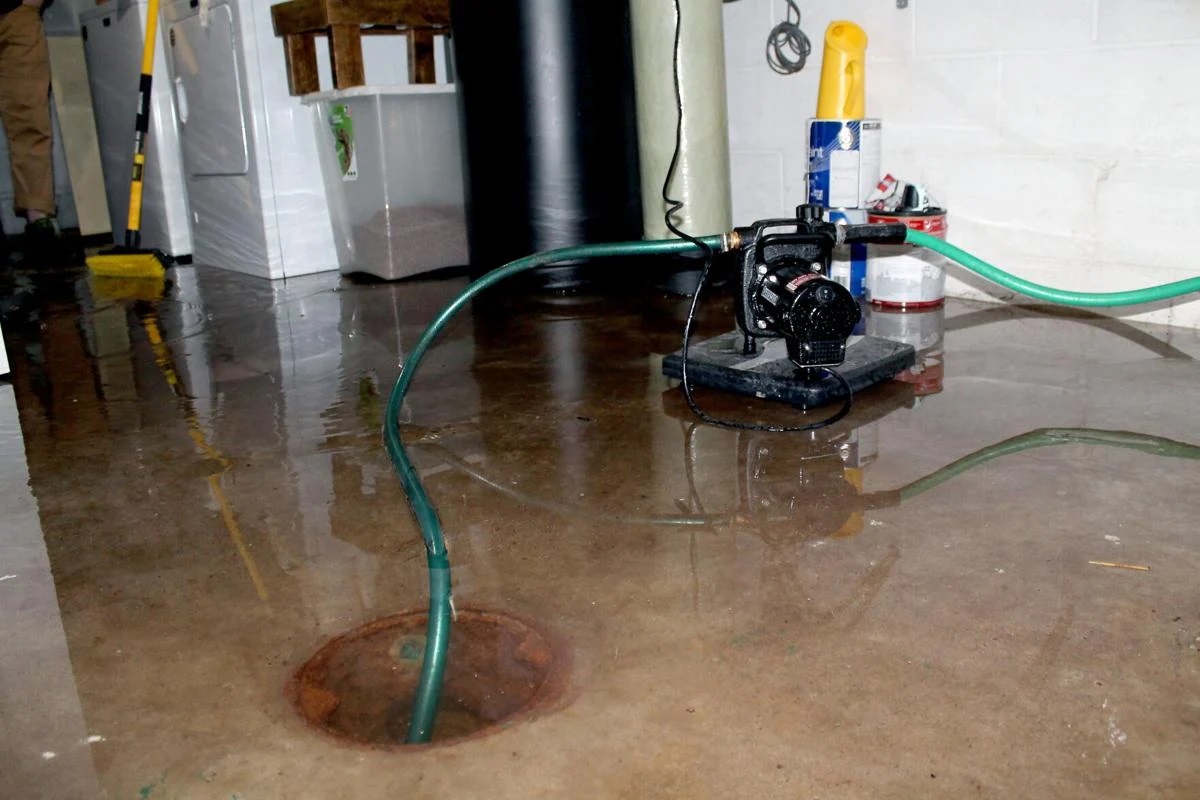
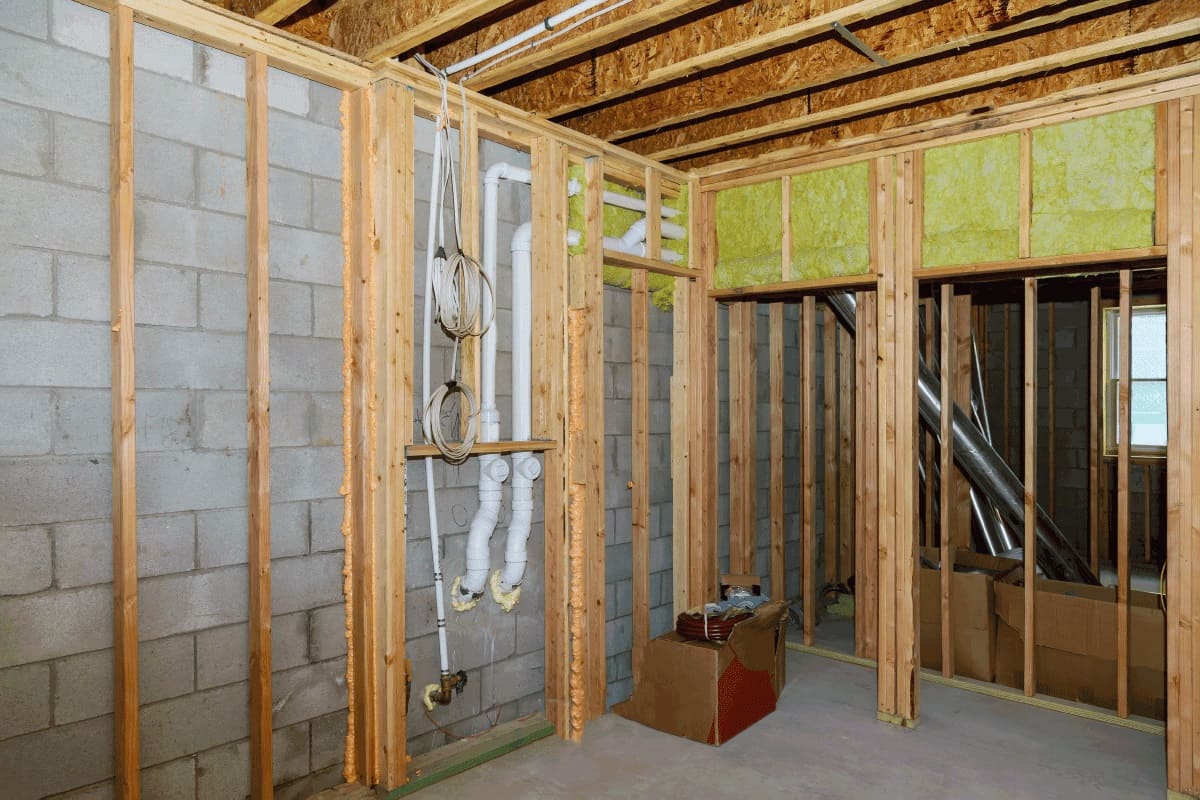
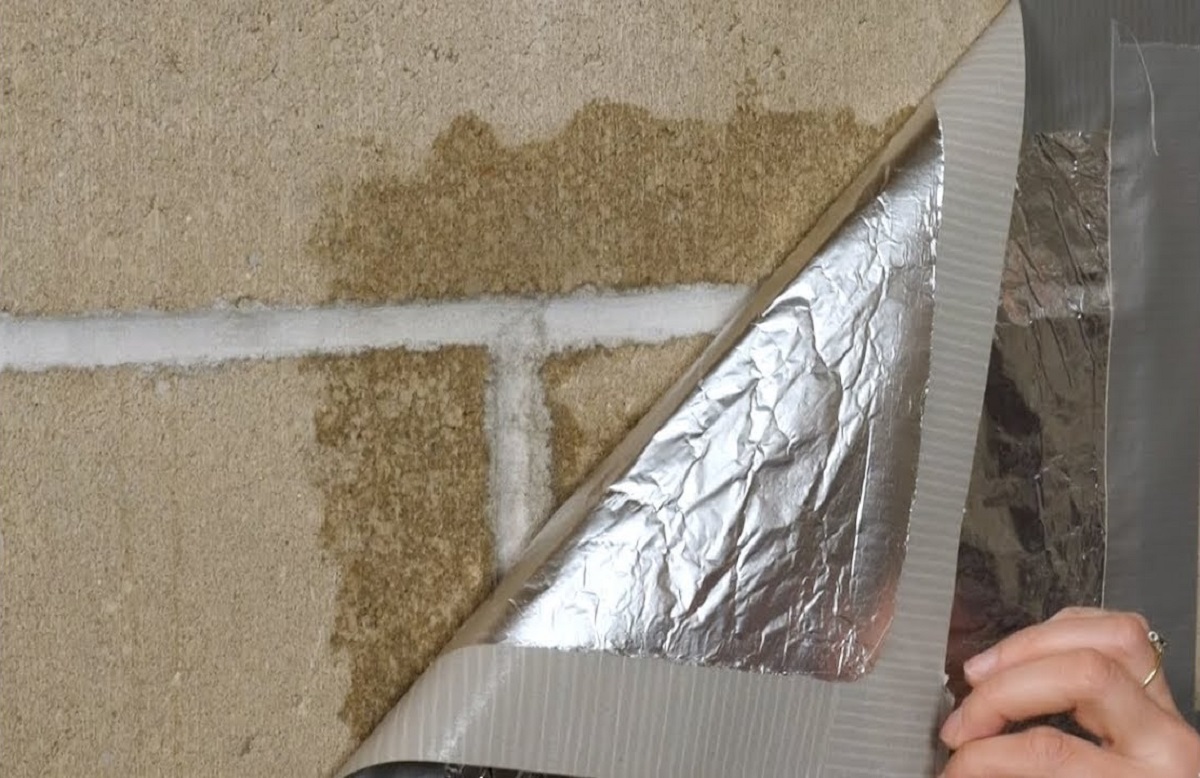


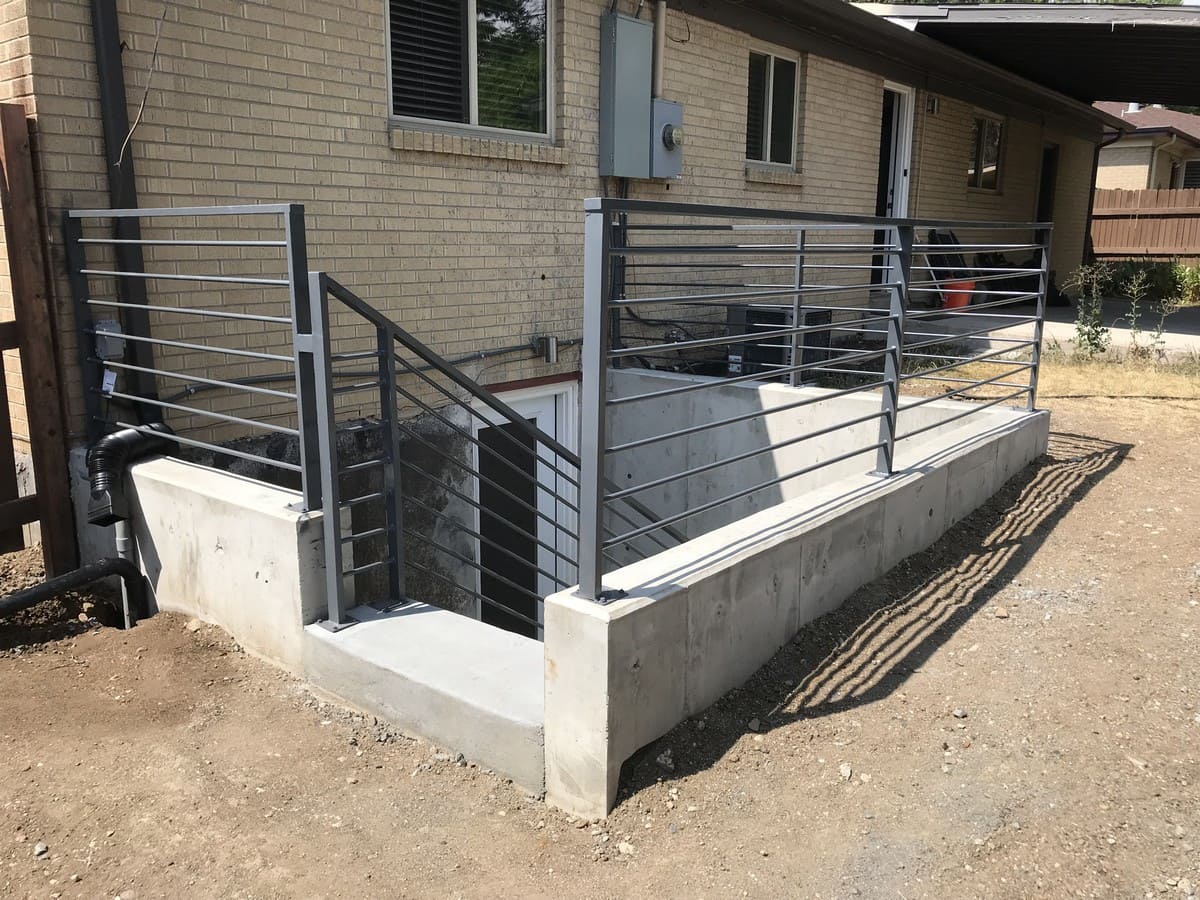



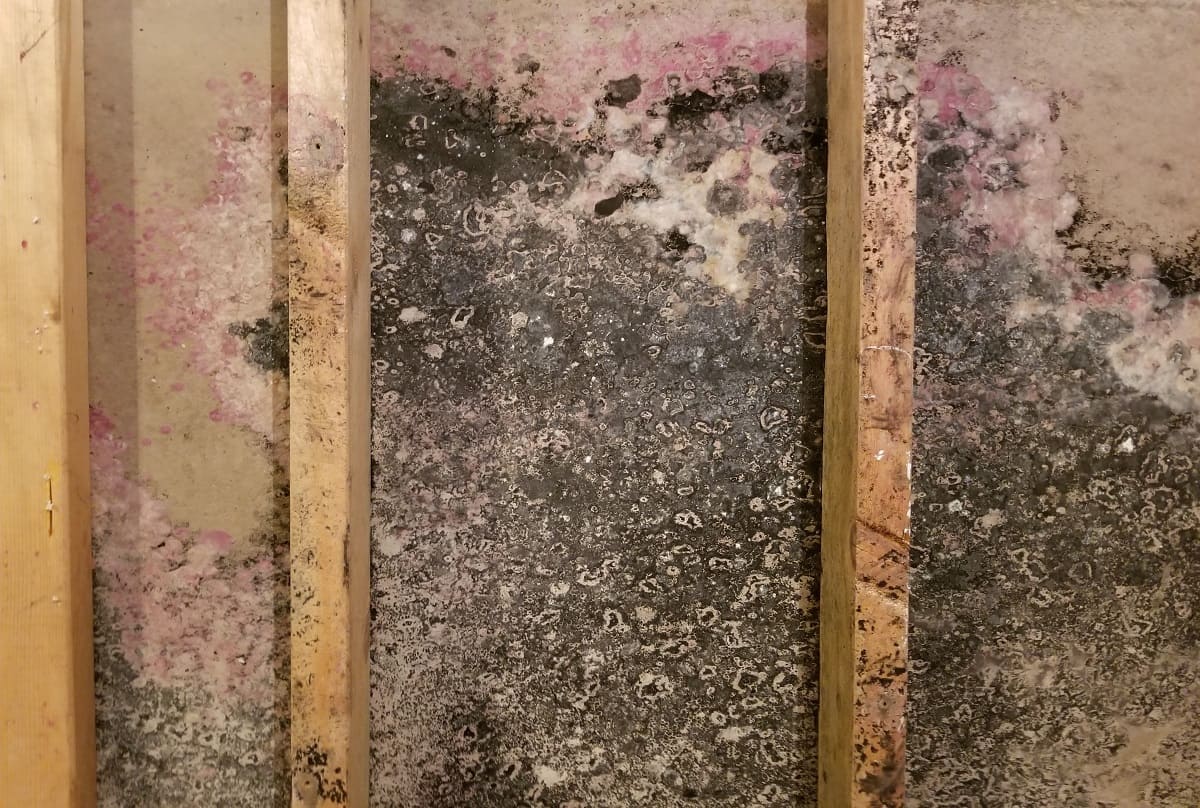


0 thoughts on “How To Dig Out A Basement”